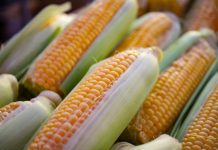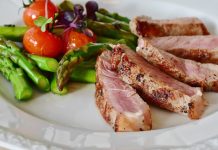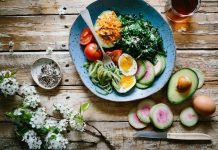Basting, braising and blanching are three common techniques used in cooking. These techniques enhance the flavor of meats and vegetables, prepares them for use in recipes or for preservation. Add these techniques to your culinary skill set for better tasting dishes and safer food preservation.
Table of Contents
Baste Foods to Keep Them Moist While Cooking
When you cook a turkey, chicken or beef roast, basting helps keep the food moist while it’s cooking in the dry heat of the oven. To baste, slowly pour small amounts of liquid over the meat. The juices that collect in the pan hold a good deal of flavor, and basting puts that flavor back into the meat.
You can also use broth or water. Use a baster to draw up the juices from the pan and release them over the top of the meat. Basting is usually called for when the meat is being cooked over a long period of time as the extended stay in the oven draws moisture out from the meat.
You can also use a variation of the basting technique to add flavor to roasting vegetables. Instead of a liquid, sprinkle a bit of garlic flavored or rosemary flavored oil over the vegetables when you turn them.
Braise Foods to Tenderize Them
Braising tenderizes tougher cuts of meat, but is also used for chicken, pork, fish or vegetables. Place a small amount of oil in a heated fry pan. Place the meat or chopped vegetable into the pan and quickly brown all sides. This is called searing.
Once the food is seared or browned, reduce the heat and add enough liquid – broth or water are commonly used – to cover halfway up the meat or vegetables; do not immerse the food.
Cover and allow the liquid and food to simmer or put the fry pan, covered, into a pre-heated 350 degree oven. Cook until the food is fork tender. Meats may take as long as two to three hours. A slow-cooker is a good tool for this technique.
Blanch Fruits, Vegetables to Remove Skins or Prep for Freezing
Blanching loosens the skin of fruits and vegetables, making it easy to peel them. If you wish to remove the skins from tomatoes, for example, boil a deep pot of water and drop the tomatoes, two to three at time, into the boiling water.
Leave them in the water for one to two minutes or until you see the skins crack slightly. Remove the tomatoes and plunge them into an ice bath to stop the cooking. Strip the peels by gently tugging away from the tomato. The same process may be used to peel soft fruits such as peaches or plums.
If you want to freeze the bounty of vegetables you harvest from your garden, blanching them first not only kills unwanted organisms, it halts the enzyme action that causes loss of flavor, color and texture.
Bring water to full boil, drop in the chopped vegetables or fruits and allow the water to return to a boil. Remove them from the water after one to two minutes and plunge them into an ice bath to stop the cooking process.
Use these techniques to get the most flavors from your foods. Basting adds moisture and flavor. Braising tenderizes less expensive cuts of meat and tougher root vegetables. Blanching makes preparation easier and preserves the flavor of frozen fruits and vegetables.



